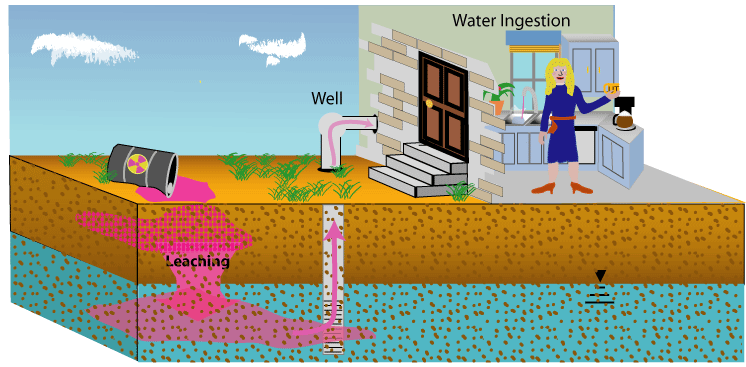Waste and Cleanup Risk Assessment
Preliminary Remediation Goals for Radionuclides (PRG)
You will need Adobe Reader to view some of the files on this page. See EPA's PDF page to learn more.
Soil to Groundwater Graphic and Supporting Text

Soil to groundwater. The soil to groundwater scenario was developed to identify concentrations in soil that have the potential to contaminate groundwater above risk based PRGs or MCLs. Migration of contaminants from soil to groundwater can be envisioned as a two-stage process: (1) release of contaminant from soil to soil leachate and (2) transport of the contaminant through the underlying soil and aquifer to a receptor well. The soil to groundwater scenario considers both of these fate and transport mechanisms. First, the acceptable groundwater concentration is multiplied by a dilution factor to obtain a target leachate concentration. For example, if the dilution factor is 10 and the MCL is 0.05 mg/L, the target soil leachate concentration would be 0.5 mg/L. The partition equation (presented in the Soil Screening Guidance for Radionuclides documents) is then used to calculate the total soil concentration corresponding to this soil leachate concentration.
The SSL methodology was designed for use during the early stages of a site evaluation when information about subsurface conditions may be limited. Because of this constraint, the methodology is based on conservative, simplifying assumptions about the release and transport of contaminants in the subsurface.
